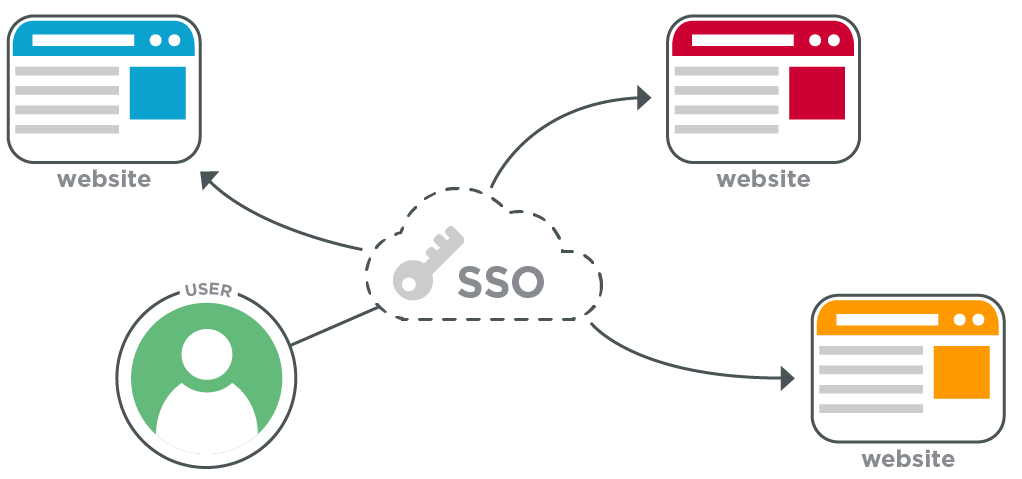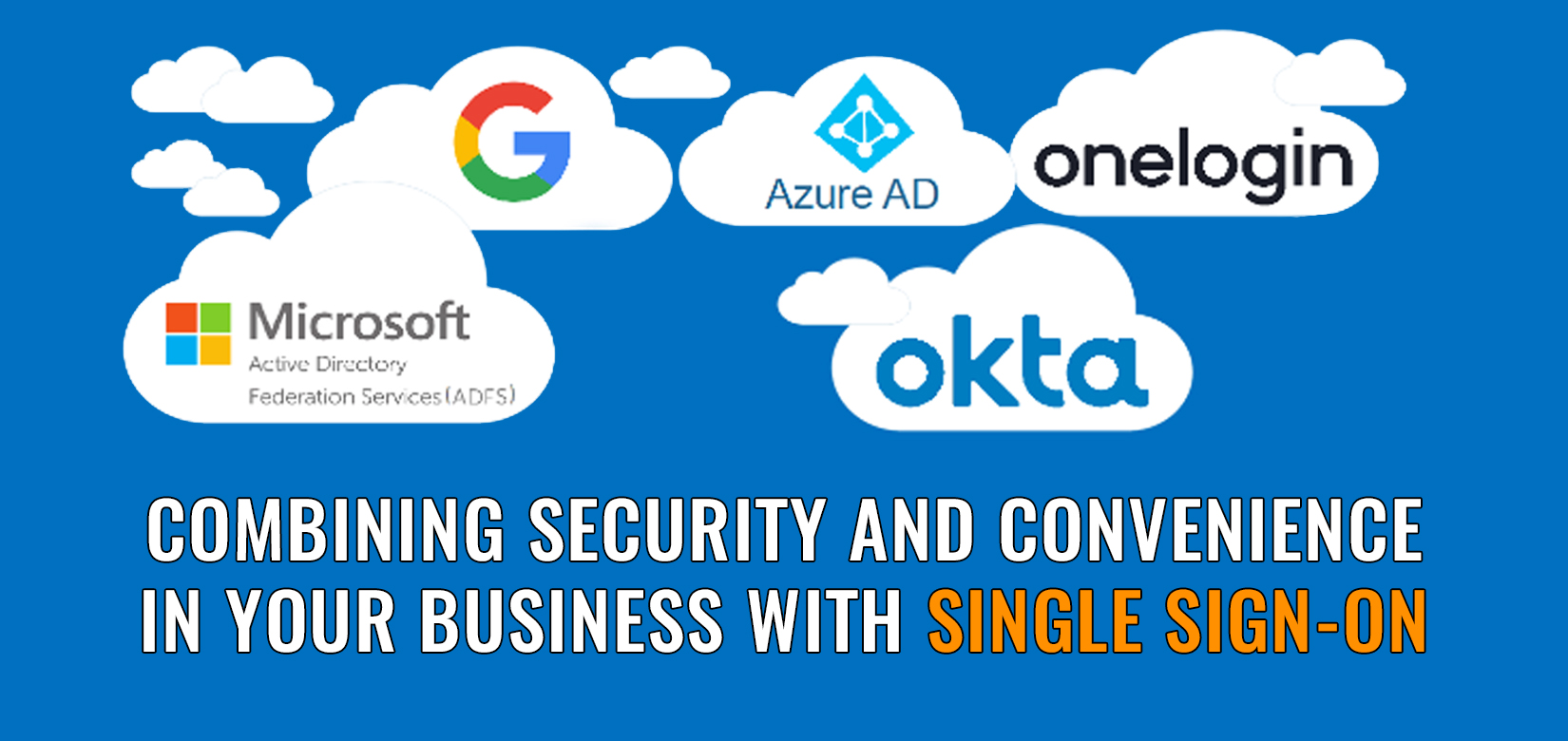In the modern workforce, managing passwords is tough. Most employees manage 85 different passwords, according to this year’s Annual Global Password Security Report by LastPass, and this presents a significant cybersecurity risk for businesses while also harming productivity and user experience.
Most business leaders are aware that maintaining a robust password security posture is more important than ever, as cybercriminals continue to target small and mid-sized businesses (and their employees). However, the rise of cloud adoption also means that most users expect to have seamless access to multiple applications from anywhere and on any device, and 2020’s exponential increase in work-from-home situations only exacerbates the issue by adding new applications and forcing users to enter passwords more often.
One of the best solutions to this security/productivity dilemma is called Single Sign-On (SSO). Single Sign-On means that users don’t have to sign in every time they need to use an application—instead, they log in using a master username and password and those credentials are used for all their other business apps. This solution perfectly combines security and simplicity, allowing your team to stick to a single master password while also improving your organization’s security posture. SSO also helps satisfy compliance requirements built on the NIST Cybersecurity Framework and CIS Top 20 Controls, making it a win-win for organizations subject to CMMC, HIPAA, CCPA, and others.
How SSO Improves Security & Increases Productivity
By allowing employees to use a single set of login credentials everywhere, SSO boosts productivity while also improving your overall cybersecurity posture. Here’s how:
Better Passwords
Employees at small and mid-sized businesses manage 85 different passwords on average. This presents a large security risk as users are likely to create simple passwords and reuse them across multiple logins. With SSO, users only need to remember a single password for all their applications, which means they are more likely to create a stronger passphrase that can’t be reused in multiple places.

Two-Factor Authentication on Everything
Enabling Two-Factor Authentication (2FA) is one of the single most important things you can do to improve your cybersecurity posture: a recent Symantec study found that over 80% of all data breaches could have been prevented by 2FA.
2FA and SSO are a match made in heaven: by enabling Two-Factor Authentication on each user’s master login, you effectively protect every application that your team needs to access, without forcing them to enter their 2FA code for every app. To learn more about how Two-Factor Authentication works, check out our One-Minute Wednesday episode.
Secure User Provisioning
Traditionally, when an employee leaves the company, the IT department needs to track down and change every single password that employee had access to. With an average of 85 passwords to update and (generally) a lack of documentation about which accounts were in use, this can present a major security vulnerability for most businesses.
SSO solves this issue by streamlining the user provisioning/deprovisioning process: when someone leaves the company, the IT team only needs to disable a single master account and/or update a master login. This can save a ton of time and, more importantly, means your IT team will never overlook an account that needs to be locked down.
Fewer Support Requests
Users often forget passwords and get locked out of important applications, and this usually necessitates a call to your IT department or IT provider to initiate a password reset. Enabling SSO means your employees only have a single password to remember, which means they’ll get locked out less often and the downtime associated with password reset requests will be significantly reduced. This frees up your employees to be more productive and your IT team to focus on important proactive work.
Improved User Experience
Single Sign-On is already a part of most people’s personal lives—we’re used to logging into a single Google login and then automatically having access to our Gmail, Google Drive, YouTube, etc. SSO extends this user experience to your employees’ work environment: your team won’t need to stress about password management or click through multiple login windows for every application, saving time with every login and boosting overall productivity.
Find Out How SSO Works For Your Business
With more people working from home and using cloud applications than ever before, it is increasingly important for businesses to develop a cybersecurity strategy. SSO is a powerful tool for securing your business from cybercriminals while also improving user experience and boosting productivity. If you have any questions about how SSO could work for your business, please don’t hesitate to contact us!





